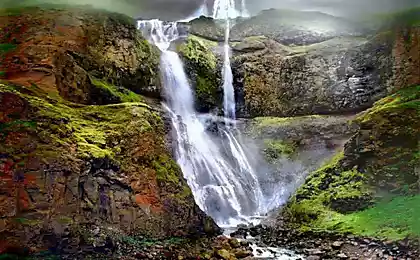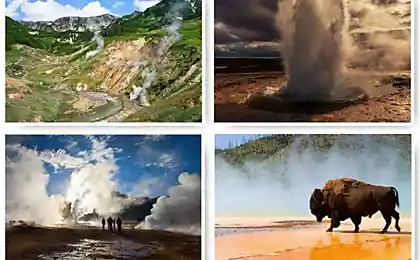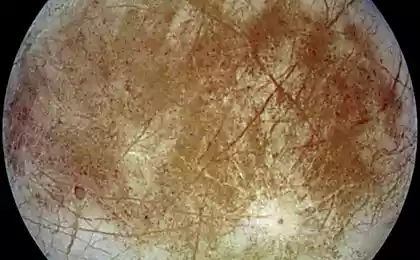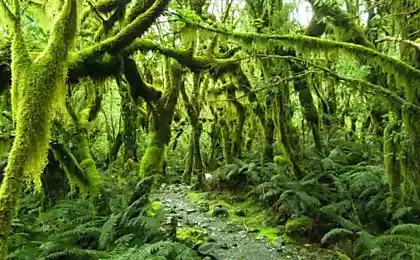643
Yellowstone geysers
102 x 87 kilometers at an average altitude of about 2400 meters above sea level - Yellowstone - the first US national park, founded already in 1872, after the signing of President Ulysses S. Grant of the decree - one of the four places in the world with an active geyser activity. The other three are in New Zealand, Iceland and our Kamchatka.
28 photos via nikolkaya
1) Yellowstone caldera - the largest volcanic system in North America.

2) it is often called a "supervolcano" because it was formed as a result of the catastrophic eruption 640,000 years ago.
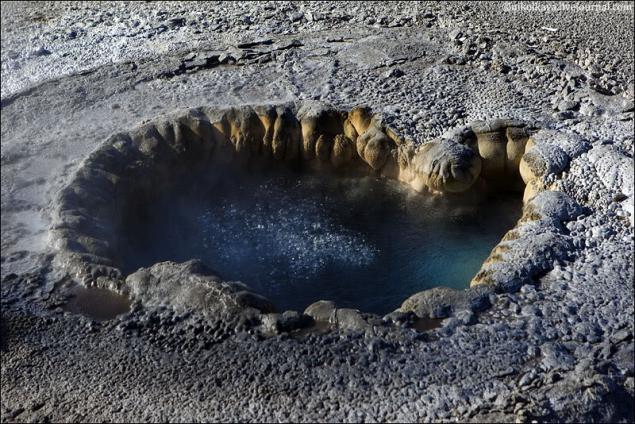
3) Today's bubbling pools, puffing and cutting through the sky fountains geysers argue that down there is not quiet until now.

4) According to the forecasts there are quite a big chance that the entire region will explode again slightly in the distant future.
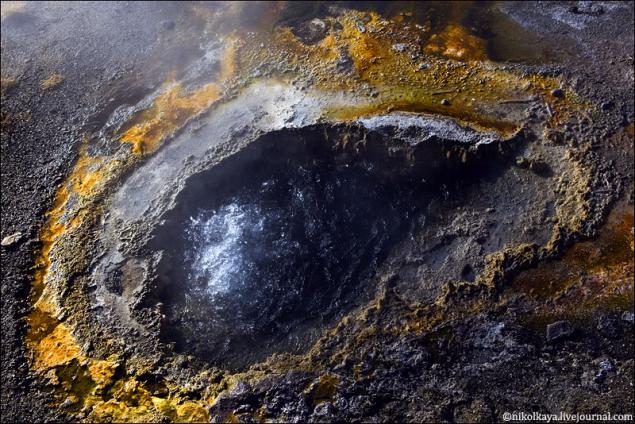
5) Yellowstone Geysers about three thousand, which represents two thirds of all the geysers in the world.

6) Hot springs - it failed geysers, underground channel system that is free of distortions and obstacles.

7) has penetrated into the soil rain and melt water reaches such depths, where the calm is heated by magma (located in Yellowstone just 10 km under the ground, turning the park into a single active volcano), and returns to the surface hot.

8) But not all hot springs and geysers such celestial purity.

9) live in warm water colored algae-thermophiles. Their color depends on water temperature.

10) The sources are constantly changing.
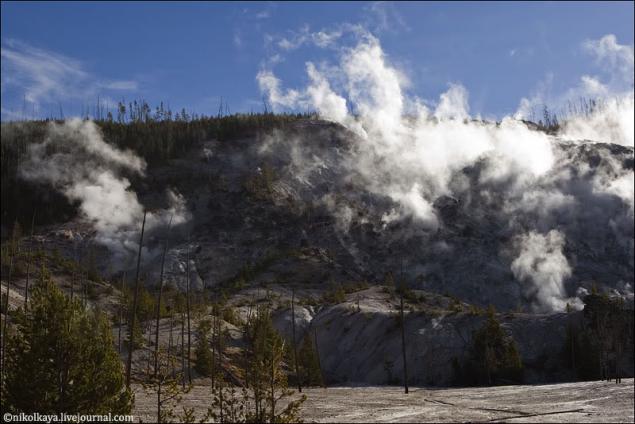
11) Yellostounskaya Caldera - the largest volcanic system in North America. Often it is called a "supervolcano" because it was formed as a result of the catastrophic eruption 640,000 years ago.
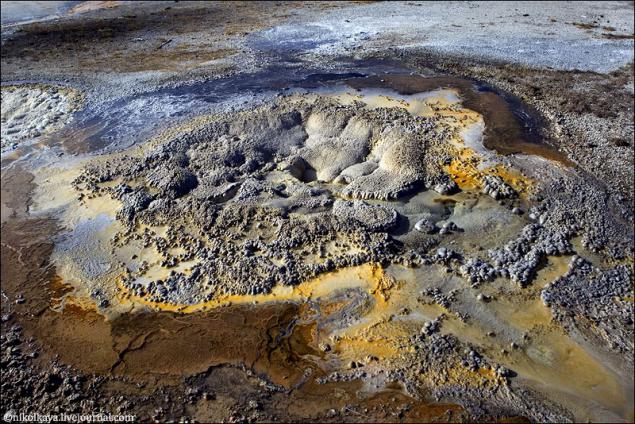
12) The park was also observed traces of two other earlier eruptions have left behind rock formations of volcanic tuff. All three eruptions have raised a huge amount of dust that is blown across North America.

13) The dust residues were found hundreds of kilometers away from the park. Presumably, the resulting ash and gases up the atmosphere and led to izmemeniya climate and the extinction of many species of animals and plants, mainly in North America.

14) Can greatly soar even pobulkivat ...

15) At the time, US scientists have conducted extensive research in Yellowstone Park.

16) Almost all the geysers and springs formed around him different in shape and color of the geological formation. For example such.

17) from Earth orbit satellites is recording surface of the Earth in search not found until calderas.

18) Humanity is the issue, how to escape from supervolcano eruption, or at least reduce the effects of its destructive activities.

19)
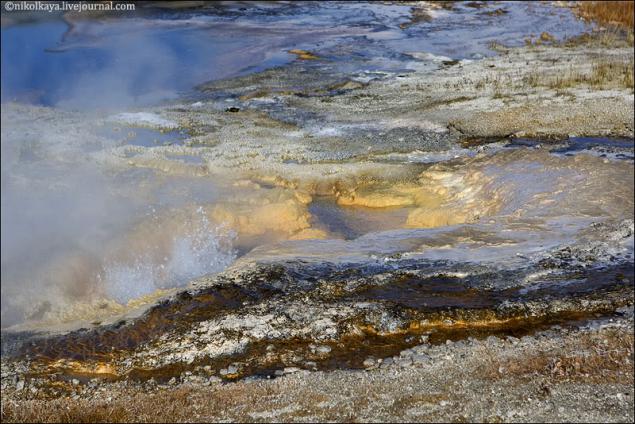
20)

21)

22)
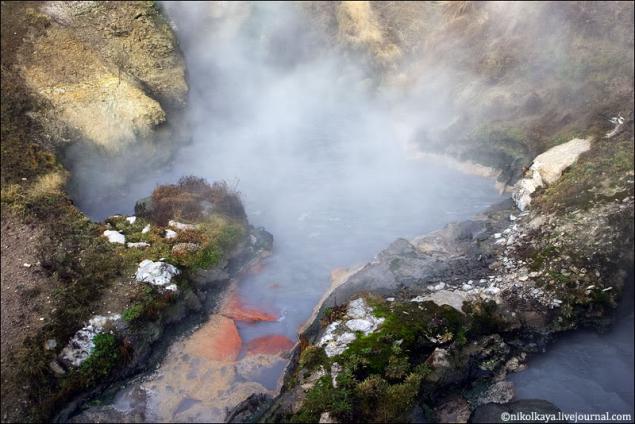
23)

24)

25)

26) There are some.
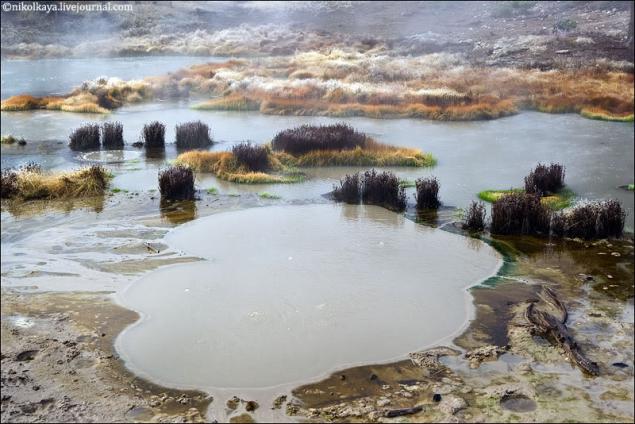
27) about this field, I said: "If you want to know what the hell, imagine that you are drowning in this dirty smelly puddle of boiling!".

28) In terms of composition - is acidic hot springs. Some species of microorganisms, with distorted notions of the normal habitat is converted smelly underground gases to sulfuric acid. And that in turn dissolves stones, making them clay. As it happens in Yellowstone, all this and more heated. Thus formed gurgling and puffing stinky mud puddle.
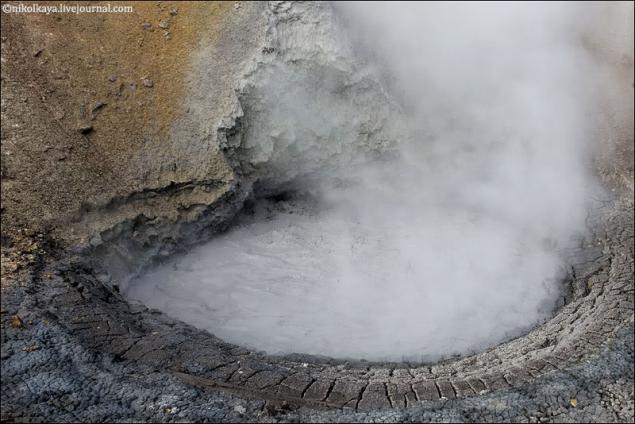
Source:
28 photos via nikolkaya
1) Yellowstone caldera - the largest volcanic system in North America.

2) it is often called a "supervolcano" because it was formed as a result of the catastrophic eruption 640,000 years ago.

3) Today's bubbling pools, puffing and cutting through the sky fountains geysers argue that down there is not quiet until now.

4) According to the forecasts there are quite a big chance that the entire region will explode again slightly in the distant future.

5) Yellowstone Geysers about three thousand, which represents two thirds of all the geysers in the world.

6) Hot springs - it failed geysers, underground channel system that is free of distortions and obstacles.

7) has penetrated into the soil rain and melt water reaches such depths, where the calm is heated by magma (located in Yellowstone just 10 km under the ground, turning the park into a single active volcano), and returns to the surface hot.

8) But not all hot springs and geysers such celestial purity.

9) live in warm water colored algae-thermophiles. Their color depends on water temperature.

10) The sources are constantly changing.

11) Yellostounskaya Caldera - the largest volcanic system in North America. Often it is called a "supervolcano" because it was formed as a result of the catastrophic eruption 640,000 years ago.

12) The park was also observed traces of two other earlier eruptions have left behind rock formations of volcanic tuff. All three eruptions have raised a huge amount of dust that is blown across North America.

13) The dust residues were found hundreds of kilometers away from the park. Presumably, the resulting ash and gases up the atmosphere and led to izmemeniya climate and the extinction of many species of animals and plants, mainly in North America.

14) Can greatly soar even pobulkivat ...

15) At the time, US scientists have conducted extensive research in Yellowstone Park.

16) Almost all the geysers and springs formed around him different in shape and color of the geological formation. For example such.

17) from Earth orbit satellites is recording surface of the Earth in search not found until calderas.

18) Humanity is the issue, how to escape from supervolcano eruption, or at least reduce the effects of its destructive activities.

19)

20)

21)

22)

23)

24)

25)

26) There are some.

27) about this field, I said: "If you want to know what the hell, imagine that you are drowning in this dirty smelly puddle of boiling!".

28) In terms of composition - is acidic hot springs. Some species of microorganisms, with distorted notions of the normal habitat is converted smelly underground gases to sulfuric acid. And that in turn dissolves stones, making them clay. As it happens in Yellowstone, all this and more heated. Thus formed gurgling and puffing stinky mud puddle.

Source:






